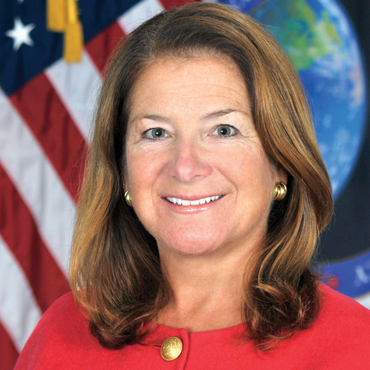NGA: Seeking full immersion in geospatial data

NGA's Map of the World will serve as the backbone for the agency's innovative efforts to satisfy the geospatial appetites of the 17 intelligence agencies.

NGA is pioneering activity-based intelligence, which Director Letitia Long said will help the agency find the "unknown unknowns, and discover them more quickly than ever before."
Imagine an environment based on seamlessly integrated intelligence that is so immersive that geospatial analysts in the intelligence community are able to "live within the data."
That futuristic-sounding scenario is on pace to be reality by 2020 at the National Geospatial-Intelligence Agency, according to NGA Director Letitia Long, who spoke at a conference hosted by Esri in February.
NGA's Map of the World will serve as the backbone for the agency's innovative geospatial efforts, which are outlined in the Intelligence Community Information Technology Enterprise initiative.
Decades ago, static maps were usually enough to satisfy the geospatial appetites of the 17 intelligence agencies, but major advances in cloud computing, mobile technology, networking, data transfer and computing in general now allow for immediate access to geospatial data processed by NGA.
Long said the Map of the World is the platform for all geo-intelligence, multisource content and knowledge, with corresponding analysis and reporting stored there as well. Imagery from satellites, maritime and air safety data, and a smorgasbord of other types of geospatial information are available to analysts with the proper credentials. And it all has been processed, curated and meta-tagged.
Using the Map of the World, analysts can focus on a geographic point in time and see layers upon layers of what is happening. The data is not, however, limited to geographic information. The Map of the World can also use social media and countless other datasets to highlight any object of interest, which can include human targets, at a highly detailed level to better show the true story.
Map of the World information is then made available via the Globe, a Web portal through which NGA shares intelligence information.
"In the past, you had to access multiple databases and search by hand for hours, sometimes even days, to find our information. That doesn't cut it in our rapidly changing world," Long said. "Map of the World provides a seamless, integrated environment so analysts can live within that data. [Our interest] is all about national security -- geospatial content far beyond any commercial offering.... All this content [is] tailored for specific defense, intelligence community and senior decision-makers' requirements."
NGA's Map of the World and its current geospatial capabilities will see improvements in the coming years, the biggest of which might occur through big-data analytics, Long said. NGA is pioneering activity-based intelligence, which Long said will help the agency find the "unknown unknowns, and discover them more quickly than ever before."
The automated process allows analysts to find answers to questions more quickly because its systems sift through petabytes of geospatial data in real time. Long said the bottom line is more insight so "our policy-makers and warfighters make better decisions."
"Everything exists, every activity occurs, and everyone is somewhere at some time," she added.



